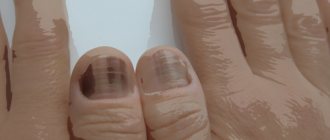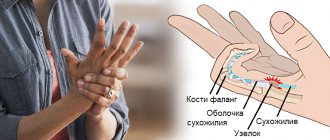I feel suffocated at night: why and what does this mean?
Sleep is a state of the human body caused by the normal functioning of the brain. For proper rest, a person needs to sleep 8 hours a day, and the 4th part of this time should be in the deep sleep stage. The shorter this phase, the more difficult it is for the body to recover.
Some people wake up at night from lack of air. They are scared and do not understand what is happening to them. The reason for this phenomenon is the cessation of respiratory movements - apnea (ancient Greek ἄπνοια - calmness, lack of breathing). Sometimes several such attacks occur during the night, moreover, they can be repeated several times within one minute.
As a result of an attack of apnea, the amount of oxygen entering the lungs decreases, the person leaves the stage of deep sleep, and sometimes wakes up. No wonder he feels exhausted the next day.
Lack of oxygen in the blood leads to loss of strength in the morning and disruption of metabolic processes in the body. In acute hypoxia, the heart and brain are affected.
How often do you have attacks?
USEFUL INFORMATION: Chronic fatigue and drowsiness: causes, symptoms and diagnosis
Mechanism of shortness of breath in the supine position
Shortness of breath while lying on your back, or orthopnea, occurs due to increased pressure in the blood vessels of the lungs. When lying down, blood flows from the lower extremities to the heart and then to the lungs. In healthy people, this distribution of blood does not cause any difficulties. But with a number of diseases, the heart's ability to pump excess blood out of the heart may decrease. As a result, blood accumulates in the pulmonary circulation passing through the lungs3.
Increased blood pressure in the pulmonary artery can contribute to the release of fluid into the alveoli and the development of pulmonary edema. This makes breathing while lying down even more difficult3.
Orthopnea is not a disease, but a symptom that occurs only in a horizontal position. An attack can develop at night, when a person wakes up due to lack of air. This phenomenon is called nocturnal paroxysmal (sudden) shortness of breath. In a sitting or reclining position, breathing, as a rule, becomes easier or completely normalized3.
A person suffocates in his sleep: all possible reasons
Lack of air during sleep is a serious problem. If a person complains: “I suffocate at night when falling asleep, it becomes suddenly difficult to breathe, I can’t breathe,” sometimes the cause is a common runny nose. However, in some cases, more serious pathologies are present, as listed below.
Obstructive sleep apnea
Cessation of pulmonary ventilation within 10 seconds, caused by a weakening of the tone of the muscles and soft tissues of the throat, as a result of which the airways are blocked and oxygen ceases to flow. A person suffering from this disease feels tired throughout the day. This is perhaps the main manifestation of this pathology. If the patient is overweight, he should sleep only on his side to avoid suffocation.
Another manifestation of apnea is loud snoring that suddenly stops and then resumes again. It can signal that a person has stopped breathing.
Hypopnea
This is the next reason for lack of air. Patients complain that they seem to forget how to breathe in their sleep. This pathology manifests itself in that the airways are half blocked by soft tissues and it takes 10 seconds or more to restore breathing.
Central sleep apnea
It occurs due to disturbances in the functioning of the brain when there is a failure in the transmission of nerve impulses that cause contraction of the respiratory muscles. The brain seems to forget that the body needs oxygen, and the person briefly holds his breath and stops breathing.
INTERESTING FACTS!
- According to the dream book, if a person suffocates in a dream, this means that serious changes in life await him, and deprivation is possible. Another interpretation is being dependent on a certain person or on certain circumstances.
- From a scientific point of view, such a dream plot can be dictated by physiology: when breathing becomes difficult or stops during apnea, a person experiences suffocation in his dream. However, according to surveys and studies, patients diagnosed with sleep apnea do not see such dreams more often than healthy people.
Acid reflux
Choking occurs because the muscles that keep stomach contents from returning to the esophagus weaken. The acid gets into the throat and causes a severe cough, making it difficult to breathe. Thanks to coughing, the throat clears after some time. An important symptom of acid reflux is a sharp feeling of heartburn in the chest area, which can wake a person up.
USEFUL INFORMATION: Why people talk in their sleep: reasons
You can get rid of the pathology by changing your lifestyle: eat small portions, have dinner four hours before bedtime. To prevent acid from the esophagus from entering the respiratory tract, it is recommended to sleep on high pillows: this way you will not suffocate.
Nocturnal asthma attacks
If bronchial obstruction occurs at night, suffocation also occurs.
The person begins to cough, cannot breathe, feels like he is suffocating. Signs of developing an attack of bronchial asthma (appear simultaneously):
- labored breathing;
- coughing;
- wheezing;
- heaviness in the chest;
- arrhythmia.
Postnasal drip
Associated with the accumulation of large amounts of mucus in the nasopharynx and usually develops against the background of a runny nose.
In certain cases, it can occur in completely healthy people. In this case, thick mucus gets into the back of the throat or the back of the nose, blocking the movement of air, and it becomes difficult to breathe. Dizziness and convulsions are symptoms indicating the presence of this pathology. They, however, can also be observed in nephropathy and multiple sclerosis. Therefore, it is necessary to undergo an examination as soon as possible to find out the true nature of the problem.
What is sleep apnea syndrome?
A person with this pathology stops breathing for more than 10 seconds during sleep. A problem is reported when the number of such episodes per hour reaches 10 or exceeds this value. In severe cases, respiratory arrest can last 20–30 seconds or more, and episodes of complete cessation of pulmonary ventilation (apnea) and its significant decrease (hypopnea) can take up to 60% of the total time of night sleep. At the same time, the structure of sleep is disrupted and its quality decreases, daytime sleepiness is noted, complaints of decreased performance and constant fatigue appear, deterioration of memory, reaction, and intelligence develops and progresses. In addition, sleep apnea causes the development of a number of serious diseases, leads to their progression and reduces the effectiveness of traditional treatment regimens.
There are:
- obstructive apnea (OSA),
- central apnea,
- mixed form.
The principle of manifestation of OSA and central sleep apnea
Central sleep apnea
This type of apnea is a consequence of disruption of the central nervous system. In people with central apnea, the airways are completely free during an episode of respiratory arrest and do not obstruct the movement of air. However, there is no breathing movement, so the lungs are not ventilated.
Obstructive sleep apnea (OSA)
It develops as a result of obstruction, that is, narrowing of the upper respiratory tract. As a result, during sleep, the airways are occasionally blocked by relaxed, sagging muscles or a recessed tongue. In this case, oxygen enters the lungs in insufficient quantities or does not enter at all, but the respiratory movements of the chest are maintained and even intensified.
Mixed apnea
It is characterized by a combination of two types of apnea - obstructive and central.
One of the most typical manifestations of OSA is characteristic intermittent snoring. It is customary to distinguish between two main types of snoring:
- uncomplicated, in which there are no breathing problems at night;
- complicated when sleep disturbance is present.
In people with OSA, snoring is always complicated.
OSA can be caused by congenital abnormalities of the pharynx (for example, enlarged tonsils)
Unlike central apnea, OSA is a widespread phenomenon. The disease occurs at any age, but most often develops in people 40-65 years old. Moreover, its likelihood increases with increasing age and weight of a person.
In the absence of obesity, the causes of OSA can be:
- congenital structural features of the facial skeleton,
- pathologies of the nasopharynx (hypertrophy of the tonsils, etc.).
Sleep apnea in a child
Apnea is especially dangerous in children under one year of age, which is due to the imperfection of their respiratory system. If a child suffocates during sleep, this may be due to the following reasons:
- insufficient formation of respiratory centers (in premature infants);
- birth injuries;
- gastroesophageal reflux disease (GERD);
- infections;
- anomalies in the structure of ENT organs;
- adenoids or chronic tonsillitis;
- allergic reactions to microorganisms living in pillows and bedding (the most common cause in adolescents);
- asthma;
- bronchospasm;
- runny nose;
- dry air in the room.
Why does orthopnea develop?
Shortness of breath while lying down can occur with various disorders, primarily with lung diseases. Predisposing factors are disturbances in ventilation and gas exchange in the lungs and changes in their blood circulation4. Let's look at some of the most common reasons.
Chronic obstructive pulmonary disease (COPD) is a common disease in which inflammation of the airways develops, often accompanied by an infectious process. Due to narrowing or complete blockage of the airways and loss of elasticity in the lungs, airflow is limited. Constant shortness of breath appears, including in a horizontal position, which becomes stronger over time. Along with it, a chronic wet cough occurs5.
Pulmonary edema is a condition that occurs when plasma rapidly moves from the capillaries of the lungs to the alveoli. It can develop against the background of heart disease - rhythm disturbances, arterial hypertension, heart failure and other pathologies. With pulmonary edema, there is a lack of air, orthopnea, anxiety, often a cough with bloody sputum, and pallor. The patient needs immediate medical attention6.
How to prevent sleep apnea
Under no circumstances should one ignore such a dangerous pathology as sleep apnea. Most often, the person suffering from it does not suspect anything, because he simply does not remember what happens to him at night. But close people may notice something is wrong. If you have problems breathing during sleep, the first thing to do is to find out the cause of apnea in order to choose the right treatment. To do this, you need to see a doctor and undergo a medical examination, which includes:
- Blood tests - general, lymphocytes, immunoglobulins, CEC, protein.
- Analysis of urine.
- Sputum examination.
- X-rays of light.
- ECG.
- Allergen tests.
- Appointment with an allergist and otolaryngologist.
USEFUL INFORMATION: Why do your hands go numb during sleep?
Further action depends on the results of the examination.
- If the patient has very enlarged adenoids or tonsils, they are offered to be removed surgically. If the septum is deviated, it is recommended to have it corrected.
- When a person is obese, he is prescribed a special diet to normalize his weight.
- For bronchial asthma, long-acting bronchodilators taken in the evening will help prevent night attacks.
- If respiratory arrest is caused by a neurological disease, drug treatment is prescribed.
- To correct a weakened, flabby palate, radio waves are used (this method is considered the most effective, as it allows you to permanently rid a person of the occurrence of apnea attacks at night), liquid nitrogen and laser (not popular).
If the treatment methods described above do not help, resort to CPAP therapy. The patient sleeps in a mask, where a special device creates comfortable pressure, which allows him to breathe normally and sleep peacefully throughout the night.
Sleep apnea - symptoms and treatment
Therapy for OSA is aimed at restoring oxygen levels, eliminating snoring, increasing alertness during the day, reducing respiratory arrest and normalizing sleep. In the modern world, there is a wide range of therapeutic measures, including surgical and conservative treatment, as well as lifestyle modification (weight loss, first of all, etc.). Before starting treatment, it is necessary to conduct a full diagnosis to determine the severity of OSA.
Timely treatment begins to lead to a significant reduction in clinical symptoms, and most importantly, to preventing the progression of the disease.
Surgical methods include ENT interventions (uvulopalatoplasty, etc.) and orthognathic operations. Uvulopalatoplasty is effective for uncomplicated snoring (isolated, extremely rare) and for mild, less often moderate, OSA. It should be performed after a thorough additional examination (polysomnography, sleependoscopy). In severe cases of OSA, ENT surgery is contraindicated due to low effectiveness and sometimes worsening of the condition.
Surgeries on the upper and lower jaw (orthognathic) can be used for any severity of the disease. They are quite effective, but the preparation for them is very long (about a year), and the operation itself is very labor-intensive. This method can be used if the patient refuses CPAP therapy.
Intraoral devices are used as an alternative to orthognathy. Their goal, like surgical treatment methods, is to expand the airways at the level of obstruction. Abroad, there is a method of electrical stimulation of the hypoglossal nerve[12], which has proven effective for any severity of the disease, but it is very expensive and is currently not available in Russia.
However, the main treatment method today is non-invasive continuous positive pressure ventilation (CPAP therapy). The essence of this therapy is to create an air flow that prevents the collapse of the airways.[10] At the beginning of therapy, a trial course is conducted to select the operating mode of the device and train the patient. After which the patient uses the device at home independently and only at night. This method is recommended for patients with moderate and severe forms of OSA and has virtually no contraindications. In addition to its main goal - eliminating respiratory arrest - using this method it is possible to significantly reduce weight and reduce the number of antihypertensive drugs for resistant arterial hypertension.[13]
Traditional methods of treating apnea
There are also traditional medicine recipes that help combat sleep apnea. Here are some of them:
- Before going to bed, it is necessary to free the nasal passages from the accumulation of mucus and crusts in them. To do this, it is recommended to rinse your nose with warm boiled water with the addition of sea salt.
- In the evening you need to drink a glass of freshly squeezed white cabbage juice mixed with one teaspoon of honey (you need to take the product for a month).
If you use folk recipes in addition to drug treatment, you can get rid of the problem much faster. However, before trying any recipe on yourself, you should definitely consult your doctor.
When to see a doctor?
If it becomes difficult to breathe while lying down, this is an alarming symptom, and you should not delay consulting a doctor. In order to diagnose the disease in time and begin treatment, it is important to contact a pulmonologist, cardiologist or therapist as early as possible. The doctor conducts an examination and, if necessary, refers to other specialists. Based on diagnostic data, a treatment regimen is drawn up.
References
- Klyushnikov S.A. et al. Clinical case of Pompe disease with late onset //Nervous diseases, 2015. No. 2.
- Sukhorukov V.S. et al. Diagnosis of Pompe disease // Russian Bulletin of Perinatology and Pediatrics, 2010. T. 55. No. 6.
- McGee S. Evidence-based physical diagnosis e-book. – Elsevier Health Sciences, 2012; p.145-155.
- Radiation methods for diagnosing heart disease / Manfred Thelen, Raimund Erbel, Karl-Friedrich Kreitner, Jörg Barkhausen; lane with him. ; under general ed. prof. V.E.Sinitsyna. – M.: MEDpress-inform, 2011. – 408 p. : ill.
- Belovol A. N., Knyazkova I. I., Gridasova L. N. Diagnosis of chronic heart failure in patients with chronic obstructive pulmonary disease // Scientific bulletins of Belgorod State University. Series: Medicine. Pharmacy, 2014. T. 28. No. 24 (195).
- Chuchalin A.G. Pulmonary edema: treatment programs //Practical Pulmonology, 2005. No. 4.
- Frolova E. B., Yaushev M. F. Modern understanding of chronic heart failure // Bulletin of modern clinical medicine, 2013. T. 6. No. 2.
- Pompe Disease More Common Than Previously Believed, Experts Say. Pompe Disease News. URL: https://pompediseasenews.com/2019/05/08/pompe-disease-more-common-than-previously-believed-experts-say/ (accessed 09/13/2019).
- Shchukina S.V. et al. Frequency and degree of shortness of breath in patients with ankylosing spondylitis // Siberian Medical Journal (Irkutsk), 2007. T. 74. No. 7.
GZEA.PD.18.09.0435q









